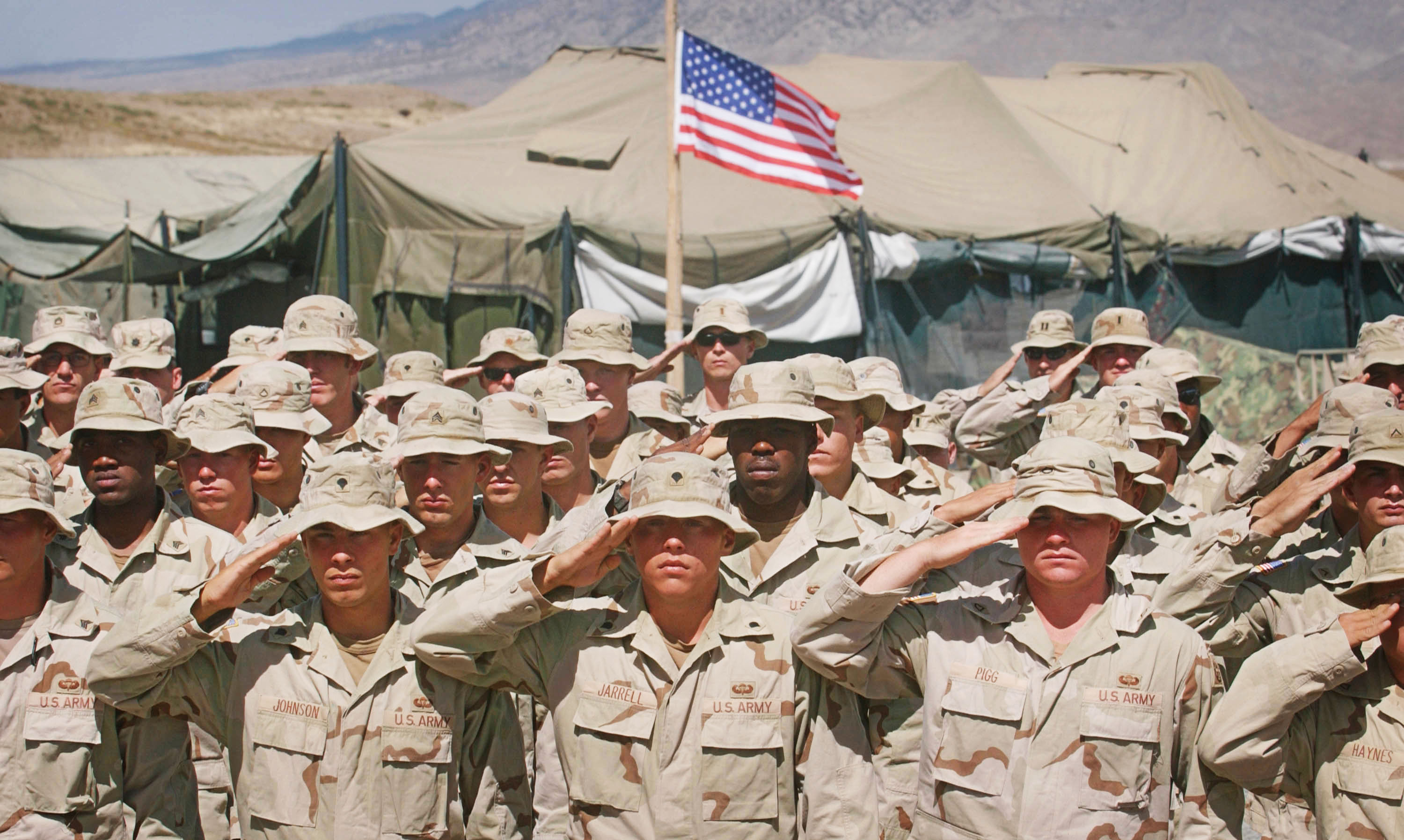How and when will Americans give up on Afghanistan?
This is the war that never ends


When the United States dropped the Mother of All Bombs in eastern Afghanistan, it killed scores of Islamist militants, according to officials in Kabul. Here in the U.S., the startled headlines served to remind Americans that their country's longest war continues — and that it has no desirable end in sight.
Are you ready for a second surge in Afghanistan? Gen. John Nicholson, the U.S. commander leading the international forces in Afghanistan, has asked for several thousands more troops to end a stalemate. Afghanistan's foreign minister, Salahuddin Rabbani, has seconded Nicholson's calls.
But it could take much more. A January report from the special inspector general for Afghanistan reconstruction estimated that about 57 percent of the country's districts were in the control of the U.S.-backed government. Roughly a third of the districts were labeled "contested," and about 10 percent were controlled or "influenced" by insurgent groups. That may be an optimistic reading of the situation. Stephen Biddle, who sits on the Council of Foreign Relations, and used to do assessment reports for generals like Stanley McChrystal and David Petreaus, has argued that it could take more than 100,000 U.S. ground troops for America to achieve even the "appearance of victory."
The Week
Escape your echo chamber. Get the facts behind the news, plus analysis from multiple perspectives.

Sign up for The Week's Free Newsletters
From our morning news briefing to a weekly Good News Newsletter, get the best of The Week delivered directly to your inbox.
From our morning news briefing to a weekly Good News Newsletter, get the best of The Week delivered directly to your inbox.
President Trump was always going to face some ugly foreign policy choices in the half dozen or so conflicts he inherited from the two previous administrations. But another surge could end as another farce.
Between Iraq and Afghanistan. U.S. policy has revealed that the primary value of a troop surge is in domestic U.S. politics. For George W. Bush, the troop surge allowed the United States to quell the violence and disorder in the Sunni Triangle long enough for the president to secure the exit of most troops and hand off responsibility to the Iraqi government. The surge worked, in a way, in that it temporarily abated violence, restored some semblance of competence to the presidency, and allowed the war to pass into other hands before the Sunni Triangle erupted again.
In Afghanistan, Barack Obama used a surge of troops to fulfill his campaign promise of focusing on the real war on terror there. His strategy never really developed, however. The surge made the U.S. presence in Afghanistan into the largest counter-terrorism operation in history. But the only way to rout the Taliban was to commit to a sustained counter-insurgency, and perhaps go after America's putative ally Pakistan, which gives shelter to Afghanistan's Islamists. That never happened. Obama got re-elected, and ever since, the story of America's longest war has been the story of American troops exiting the country, Taliban forces regaining larger and larger portions of territory, and the corruption of the American-backed government in Kabul growing.
During his campaign, President Trump asked why America didn't win wars anymore. But he didn't promise an end to the war in Afghanistan. If the U.S. withdraws its remaining 8,000 troops, it will do so knowing full well that the amount of pressure the Taliban can put on the government in Kabul will lead to that government's collapse. That will count as a loss, and it is one that Trump will want to avoid while he seeks foreign policy "wins" in Syria or the Korean peninsula.
A free daily email with the biggest news stories of the day – and the best features from TheWeek.com
The likeliest bet is that Trump will increase troop levels by a small number, perhaps to a point that keeps the risk of a surprise and embarrassment at the hands of the Taliban low. But he will likely hand this conflict to his successor as well. Occasional counter-terror missions and bombing runs will be justified for keeping the Taliban on their toes, and preventing them from launching more complex missions beyond their immediate geographic base in eastern Afghanistan.
In Europe, Japan, and the Korean peninsula, the United States has used troops to keep a long peace going. In Afghanistan, it looks like troops will remain indefinitely to keep America from losing an unwinnable war.
Michael Brendan Dougherty is senior correspondent at TheWeek.com. He is the founder and editor of The Slurve, a newsletter about baseball. His work has appeared in The New York Times Magazine, ESPN Magazine, Slate and The American Conservative.
-
 How Bulgaria’s government fell amid mass protests
How Bulgaria’s government fell amid mass protestsThe Explainer The country’s prime minister resigned as part of the fallout
-
 Femicide: Italy’s newest crime
Femicide: Italy’s newest crimeThe Explainer Landmark law to criminalise murder of a woman as an ‘act of hatred’ or ‘subjugation’ but critics say Italy is still deeply patriarchal
-
 Brazil’s Bolsonaro behind bars after appeals run out
Brazil’s Bolsonaro behind bars after appeals run outSpeed Read He will serve 27 years in prison
-
 Americans traveling abroad face renewed criticism in the Trump era
Americans traveling abroad face renewed criticism in the Trump eraThe Explainer Some of Trump’s behavior has Americans being questioned
-
 Nigeria confused by Trump invasion threat
Nigeria confused by Trump invasion threatSpeed Read Trump has claimed the country is persecuting Christians
-
 Sanae Takaichi: Japan’s Iron Lady set to be the country’s first woman prime minister
Sanae Takaichi: Japan’s Iron Lady set to be the country’s first woman prime ministerIn the Spotlight Takaichi is a member of Japan’s conservative, nationalist Liberal Democratic Party
-
 Russia is ‘helping China’ prepare for an invasion of Taiwan
Russia is ‘helping China’ prepare for an invasion of TaiwanIn the Spotlight Russia is reportedly allowing China access to military training
-
 Interpol arrests hundreds in Africa-wide sextortion crackdown
Interpol arrests hundreds in Africa-wide sextortion crackdownIN THE SPOTLIGHT A series of stings disrupts major cybercrime operations as law enforcement estimates millions in losses from schemes designed to prey on lonely users



